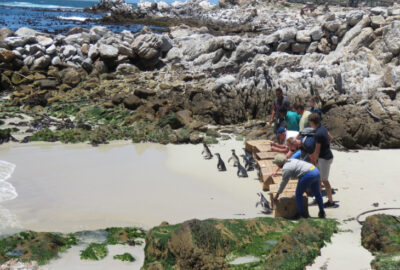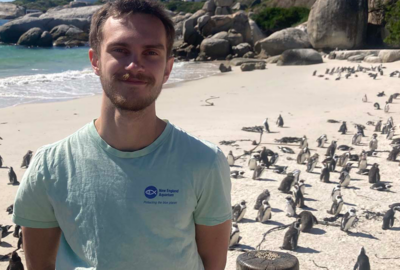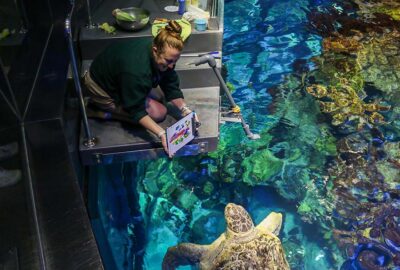Do all the penguins have names?
The conservation messaging behind our African penguin names
By New England Aquarium on Friday, April 22, 2022

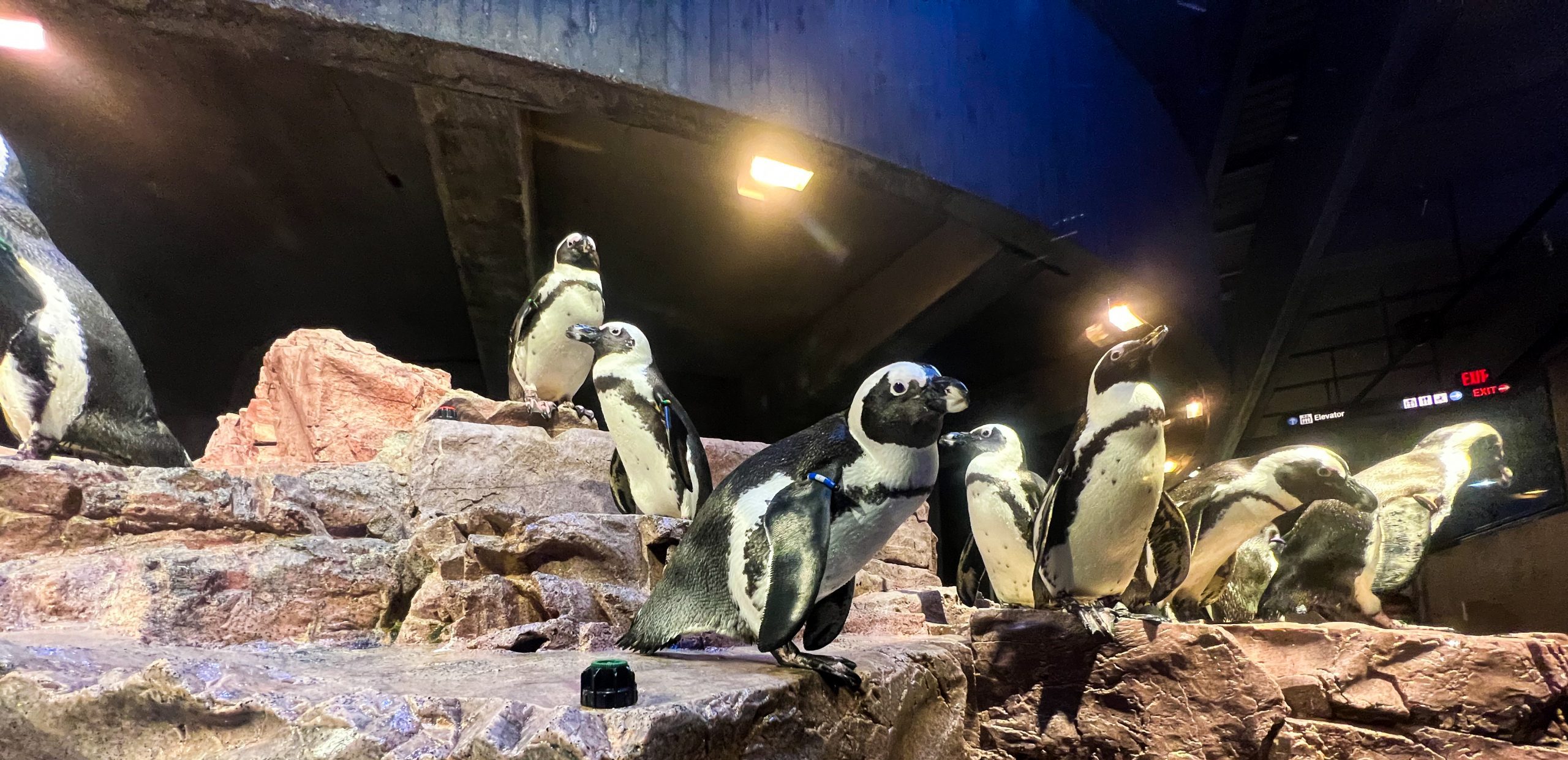
By Amanda Barr
A common question we get here at the New England Aquarium penguin colony is: “Do all the birds have names?” The answer to that is: yes, they all do! Not only do they all have names, but all of our penguins have names that are educational and can teach us something about their species of penguin, or penguins in general. Today, on World Penguin Day, we’d like to highlight a few of our penguins whose names have very important conservational meanings.
The African penguin species is currently considered endangered, and are on the brink of becoming critically endangered. Their global population is currently estimated to be around 14,700 pairs total, which is only around 3% of what its historical levels were over a century ago. Between 2019 and 2021 alone, the population of breeding aged birds declined by 23%. Based on the current trends, it is possible that the African penguin could be functionally extinct in its natural environment by 2035, if nothing changes.
Through these penguins and their names, we’d like to share some of the plight of the African penguin with you in hopes of inspiring all of us to make changes that can help affect their counterparts in their natural environments.
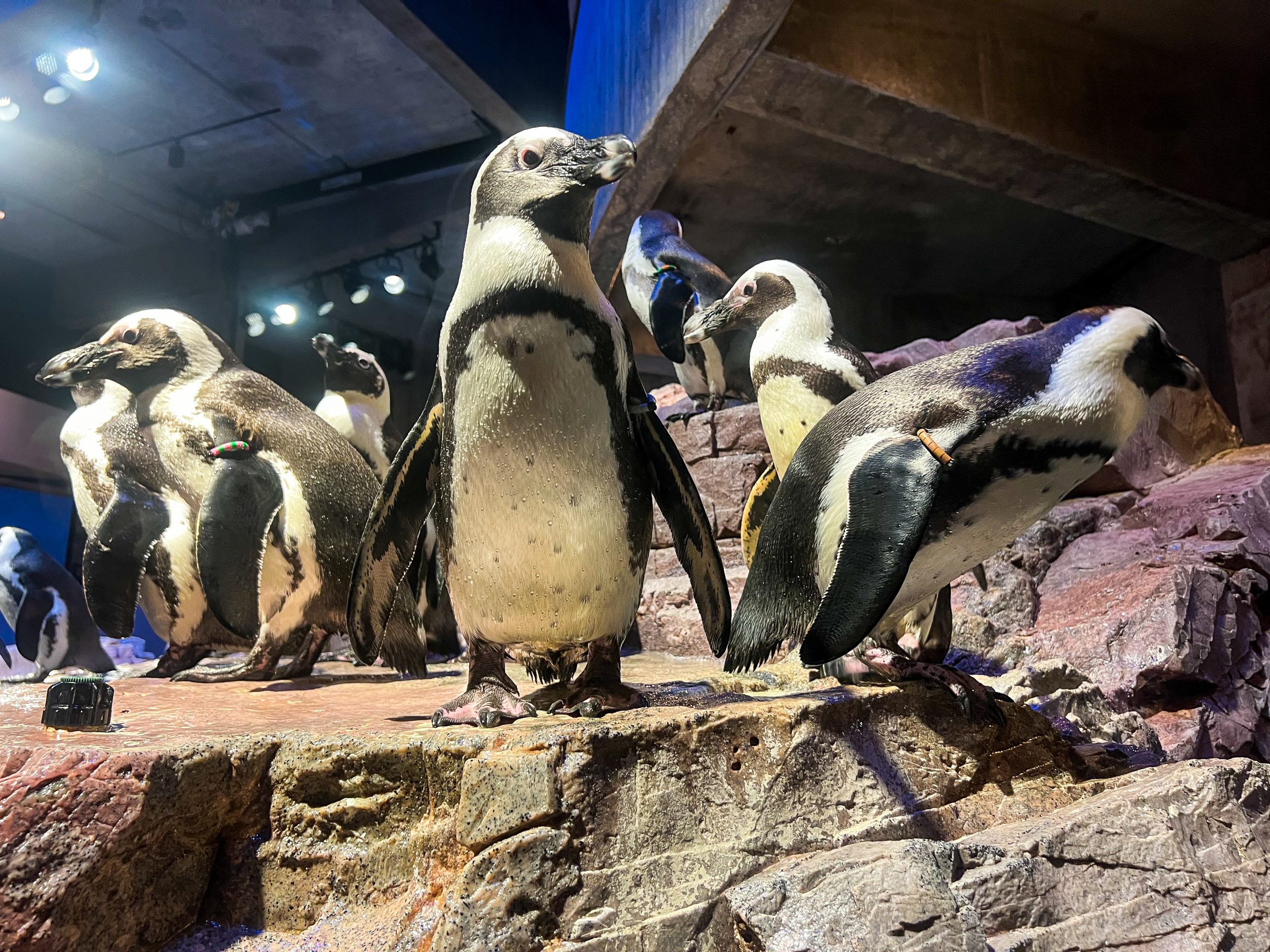
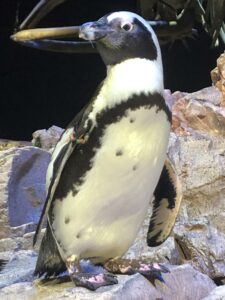
St. Croix II and Dassen IV: Currently the two largest breeding areas for African penguins are St. Croix and Bird Islands, which are located in Algoa Bay, on the southeastern coast of South Africa. Twenty-year-old St. Croix II and 10-year-old Dassen IV are named after these large breeding islands that are crucial to their species. Historically, the two largest breeding islands for the African penguin were Robben and Dassen islands, which are located farther to the west than St. Croix and Dassen islands. In 2004, Dassen island was home to ~25,000 breeding pairs of African penguins and Robben Island about 8,000 pairs. Now, none of the remaining colonies house more than 5,000 pairs. Currently, St. Croix and Bird islands alone are home to nearly half of the remaining population.
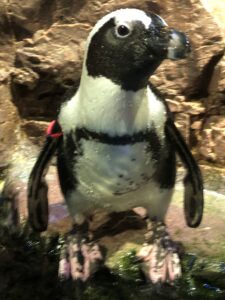
The drastic declines in these populations are partially due to historic egg and guano harvesting that were still occurring up until as recently as 1969. African penguins create their nests in burrows of seabird guano, so the harvesting of the layers and layers of guano has made it difficult for them to be able to create appropriate nests. This still affects them today, as it would take centuries for them to replenish enough guano to build their nests. A project has recently been implemented to create and deploy artificial nests that have appropriate size, temperature, and humidity specifications to successfully allow the penguins to use them to breed. This project is through the Association of Zoo’s and Aquarium’s (AZA) Saving Animals From Extinction (SAFE) program.
Learn more about the African penguin SAFE program here: https://www.savingpenguins.org/ and read their latest update here: https://www.aza.org/connect-stories/stories/aza-safe-african-penguin-conservation.
Chrysanthi: Although there have been more catastrophic oil spills in the past such as the MV Treasure oil spill in 2000 and the MV Apollo spill in 1994, these threats actually are still happening even now.
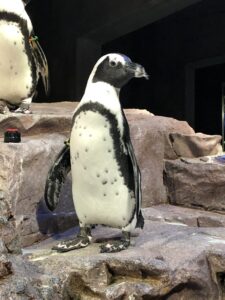
A spill occurred just last year, October 2021, in Southern California, which affected seabirds and other marine life. Not too long before that, in July 2019, the MV Chrysanthi spilled 50-100 gallons of oil in Algoa Bay in South Africa. This spill resulted in over 100 African penguins, chicks, and other sea birds being oiled, along with eggs being abandoned due to the parents being oiled. A penguin being oiled is dangerous because it damages their feathers and takes away their ability to keep the cold water away from their skin, which can then lead to hypothermia. The oil is also toxic and can be ingested when the birds attempt to preen it off their feathers. All of the affected birds and eggs were rescued and admitted to Southern African Foundations for the Conservation of Coastal Birds (SANCCOB) after the 2019 oil spill, where SANCCOB was able to rehab and re-release them. Our second youngest African penguin, Chrysanthi, hatched on May 14, 2019, just before the MV Chrysanthi oil spill. She was named after this crisis in hopes of spreading more awareness to the threat that these disasters still place on African penguins and other marine life today.
DeHoop: DeHoop is an 11-year-old African penguin and she is named after the DeHoop Nature Reserve on the Southern Coast of South Africa. This reserve had a small established colony of penguins back in 2003, but unfortunately the colony was abandoned a few years later due to predation by caracals (the largest small wild cat that inhabits South Africa).
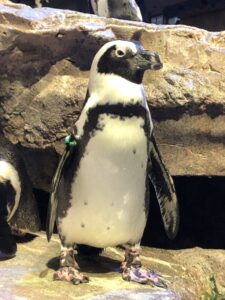
In 2015, BirdLife South Africa created a predator proof barrier and put out life-like penguin decoys and broadcasted penguin calls over loudspeakers, all in an effort to make it seem like penguins were breeding there. Unfortunately, after two years of waiting, no penguins were observed recolonizing the area, so BirdLife reached out to the Southern African Foundations for the Conservation of Coastal Birds (SANCCOB) for help. On June 11, 2021 the first set of juvenile African penguins were released at DeHoop. These birds had been hand reared at SANCCOB from eggs that had been abandoned at the Stony point penguin colony. The hope of releasing juvenile penguins is that since they have not yet chosen a place to breed, they will return to the place that they were released when they are ready to breed in a few years. This is an exciting story that is still ongoing and will hopefully be a success story for the African penguin breeding populations!
Dyer III: Eleven-year-old Dyer is named after Dyer Island, a protected seabird island off the coast of Gansbaai, South Africa. Similar to the other islands we just talked about, Dyer Island has had a massive decrease from approximately 25,000 breeding pairs, to now just above 1,200 pairs, in large part due to guano harvesting as well. In addition, in the late 1970s, thousands of penguins abandoned their nests on Dyer Island due to the overfishing of anchovies in the area. Historically the penguins have had other locations to flee to (Stony Point, Boulders Beach), but now there are no more fertile fishing grounds for the penguins to move to. Now, they need our help to be able to survive.
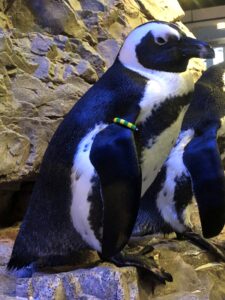
It’s easy to think that oil spills and guano harvesting are not issues that we have caused, and that our actions do not affect a species of penguin that lives over 7,700 miles away from Boston. But our actions can directly affect the world that these creatures live in, which means there are things that we can do to help. Making responsible decisions when eating seafood is one of the easiest ways to help keep our oceans healthy. It is important to make sure that the fish we are eating is sustainable and not being overfished and depleted out in the oceans. Being educated about where your fish is coming from and how it is being fished is fairly simple, but can make a big difference. Another important way to help African penguins is by doing our part to slow climate change. Small things like using reusable bags and containers or taking public transportation can make a big difference if we all do them. The fewer single-use plastics that are used, the fewer items factories need to produce, which means less oil is used and fewer gasses are emitted into the atmosphere, helping to slow the overall changes. If we all commit to making these small changes, we can work together to help our planet and save crucial species like the African penguin!

